纳粹建立的这家公司该如何摆脱丑闻?
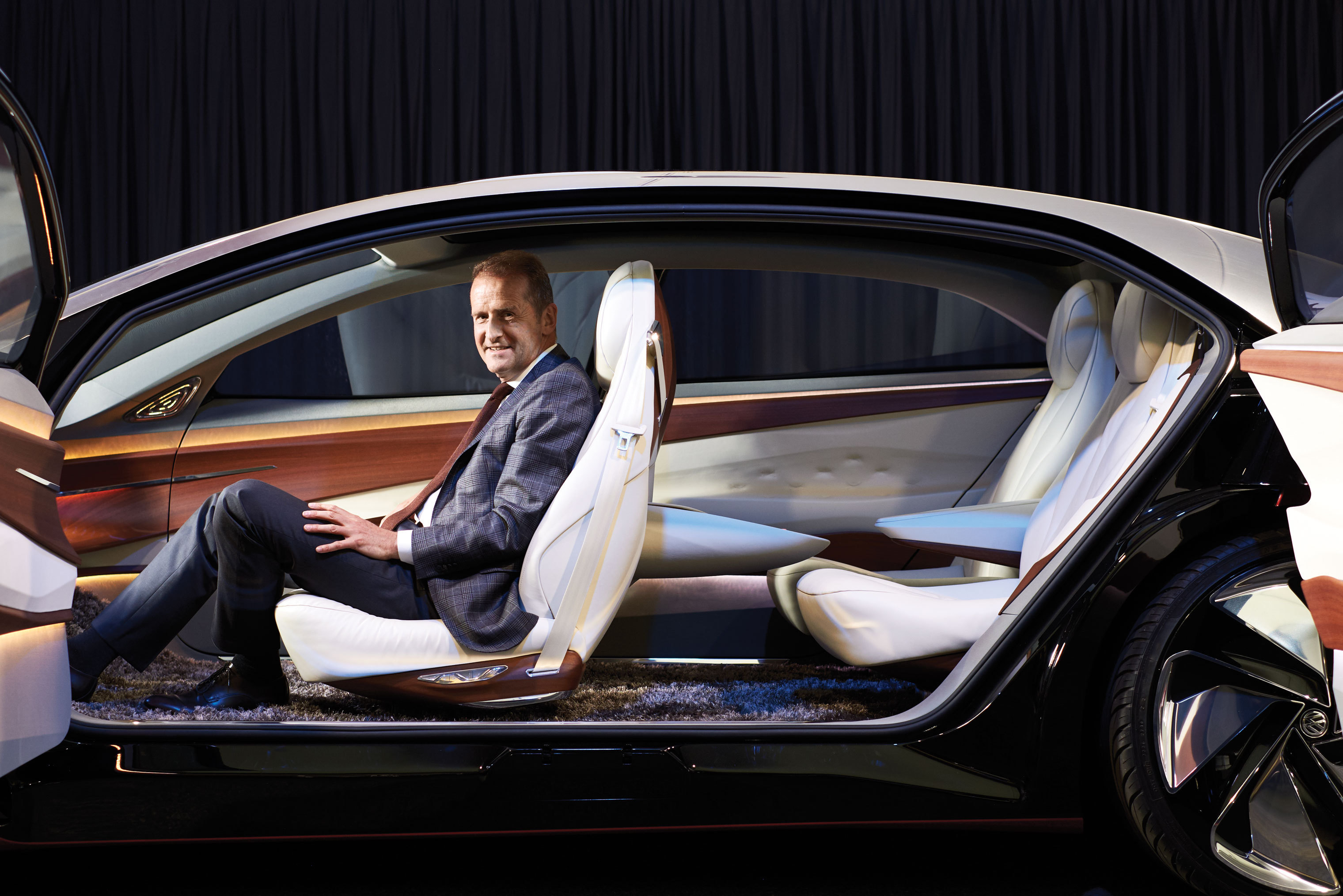
|
在德国中部夏季一个炎热的下午,全球最大汽车制造商的新任首席执行官坐进了一张白色皮革座椅,将鞋伸进了脚下厚厚的蓬松地毯,然后露出了微笑。于4月接任大众首席执行官一职的赫伯特·迪斯将自己高大的身影塞进了一大块酷似轿车形状的樱桃红金属壳中。不过,这辆车没有方向盘、踏板、离合器或任何人们通常能够在汽车中找到的部件。这个光鲜亮丽的奇妙装置是大众的概念车,名为I.D. Vizzion,在3月的日内瓦汽车展上首次与世人见面。 然而,I.D. Vizzion不仅仅是个试验品,或轮子上的起居室。用迪斯的话来说,它能够让人们窥见不久之后公司的无人驾驶愿景。迪斯正斥巨资押注基于这一愿景的策略,不惜花费数亿美元投资电动和自动驾驶技术。这位首席执行官坚信,这一技术的正确运用将成为公司生存的关键。 迪斯坐在大众沃尔夫斯堡总部巨大的工厂中说道:“我们不妨看看当马车向汽车转变,化学成像照片向数字成像照片转变的时候市场都发生了什么变化。”沃尔夫斯堡距离柏林西部约140英里,是一个暮气沉沉、因大众而兴起的城市,人口12.5万。“市场出现了巨大的颠覆性变化。当时能够活下来的知名公司寥寥无几。柯达倒下了,而且他们很清楚自己倒下的原因。” 59岁的迪斯上任仅有数月的时间,他选择了在大众神秘的创新中心(黑色的天鹅绒窗帘遮掩了房间的一部分)与我见面,为的是强调他的观点:只有大刀阔斧的转型才能够挽救这家汽车巨头,以免被更多灵活的竞争者抛在身后。他说:“如今,变革对于公司来说真的很重要。” |
On a hot summer afternoon in central Germany, the new CEO of one of the world’s largest automakers sinks into a white leather armchair, digs his shoes into the thick shag carpet under his feet, and grins. Herbert Diess, who took over as Volkswagen AG’s chief executive in April, has his tall frame folded inside a cherry-red chunk of metal that closely resembles a car—except for the fact that it’s missing a steering wheel, pedals, gears, or anything else you’d normally expect to find in an automobile. The slick contraption is a VW concept car called the I.D. Vizzion. It made its debut at the Geneva Motor Show in March. The I.D. Vizzion is more than just an experiment, however, or a living room on wheels. Rather, says Diess, it offers a glimpse of our driverless near-future. And Diess is betting heavily on a strategy built on that vision—staking hundreds of millions of dollars on electric and autonomous technology. The CEO insists that getting the technology right will be key to the survival of his company. “Look what happened when we went from horse-drawn carriages to cars, from chemical-based photography to digital photography,” says Diess, sitting in Volkswagen’s gargantuan factory headquarters in Wolfsburg, a sleepy company town of 125,000 people, some 140 miles west of Berlin. “There was huge disruption. Very few of the successful companies remained. Kodak did not make it, and they knew what was coming.” Just a couple of months into his job, Diess, 59, has chosen to meet me inside Volkswagen’s secretive innovation center—a black velvet curtain hides one part of the room from view—in order to underscore his point: That only radical transformation can save the auto giant from being left behind by more nimble competitors. “It is now really important for us to change,” he says. |
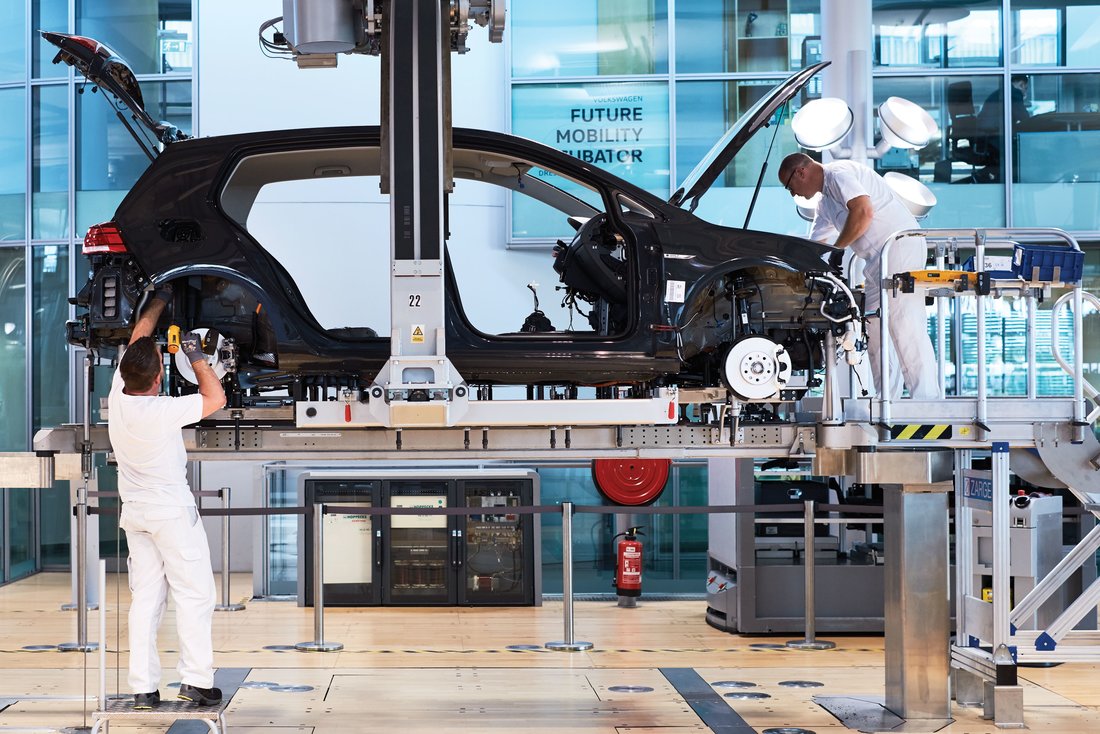
|
很少有行业能够像汽车行业那样恰好成为了这场技术巨变的聚焦点。100多年来,汽车行业的存在完全依靠的是一项单一的发明——内燃机。如今,整个汽车行业的年销量约为8000万辆。去年,有1080万辆来自于大众集团,1040万辆出自丰田之手,而丰田已经逗留在汽车销量排行榜前列长达数年之久。大众旗下的12个品牌包括保时捷、斯柯达、奥迪和大众自身,而大众也是公司旗下最大的品牌。去年,大众的总营收达到了创纪录的2600亿美元,足以让公司登上今年《财富》世界500强榜单第7位,仅次于丰田。 然而,尽管数千万车主可能在今后很长一段时间内仍将继续使用燃油作为动力,但汽车制造商正在面临一场大清洗,因为全球市场开始缓慢转向电动汽车,而且很多国家的碳排放目标也逐渐让传统的驾驶方式走向末路。拼车的兴起有可能在未来十年内让城市的面貌和汽车持有量出现巨大的变化。 在这一转型过程中,美国亲眼见证了自身市场主导地位的衰退,然而美国民众对汽车的激情事实上左右了行业策略长达数十年的时间。如今,更为重要的一个国家莫过于大众最大的市场——中国,该国民众购买了全球四分之一的新车,而且该国也开足了马力,生产畅销的电动汽车。“变革即将来临。”迪斯说道。 这个范围的动荡对于任何企业来说都是令人生畏的。然而对于大众来说,在此事发生之时,大众依然还未走出其令人震惊的柴油尾气作弊丑闻阴影。用一些高管的话来说,这是自希特勒设立沃尔夫斯堡工厂并将其作为重要的纳粹项目以来,公司遭遇的最大打击,时隔正好80年。 这次丑闻又被称为“排放门”事件,于2015年9月爆发,当时美国环境保护署发现大众参与了约60万辆柴油车碳排放测试的造假,随后这一数字增至数百万辆。在五年多的时间中,沃尔夫斯堡的工程师在车上安装了“作弊装置”,用于掩盖引擎排放的氮氧化物含量。麻省理工学院的科学家发现,真实的排放量高达美国法律规定上限的40倍。他们估计,造假引擎所排放的有毒化合物可能导致欧洲1200人过早死亡,也致使美国的过早死人数增加了约60名。 约三年前,大众当时已经支付了近300亿美元用于法律和解,并召回或改装了1100多万辆汽车,但尘埃远未落定。大众首席技术官乌尔瑞奇·艾希霍恩说:“令我感到惊讶的是,我们有时候仍然会发现一些更老的软件也拥有这些功能,但我们并不知道车里面安装了这种软件。”此外,大众在欧洲和美国被卷入了数十个指控和案件,而这些案件可能会持续很长一段时间;3月发布的最新年报列出了数十个正在进行的法律行动。迪斯说:“这些案件将持续数年的时间。”有多少?“我不能说。” 为了展示公司如何向前迈进,大众邀请《财富》杂志在6月底访问其错综复杂的沃尔夫斯堡总部,并逗留数日,从而在公司成立80周年之际以不同寻常的视角来深入了解这家处于紧要关头的公司。 |
Few businesses sit so squarely in the crosshairs of a tech upheaval as the auto industry, whose very existence has depended for more than 100 years on a single invention: the combustion engine. Today, the industry overall sells about 80 million cars a year. Last year, a full 10.8 million of those came from the Volkswagen Group, more than the 10.4 million sold by Toyota, which had held the top-selling spot for years. Volkswagen’s 12 brands include Porsche, Skoda, Audi, and VW itself, the biggest brand of all. Last year, Volkswagen’s total revenues were a record $260 billion. That was enough to place the company at No. 7 on this year’s Fortune Global 500 list—one spot behind Toyota. And yet, while millions of us will probably be filling our tanks with fuel for years to come, carmakers are facing a major shakeout as the world begins a long-term shift to electric vehicles and as carbon-emissions targets in many countries slowly upend old driving habits. A boom in ride-sharing could also drastically reshape cities and car ownership within a decade. Amid this transformation, the U.S., whose passion for cars virtually dictated the industry’s strategy for decades, is seeing its market dominance fade. More important now is China—Volkswagen’s biggest market—which buys about one-quarter of all the world’s new cars and which is racing full speed into producing mass-market electric vehicles. “Change,” says Diess, “is imminent.” Turbulence on this scale would be daunting for any business. But at Volks-wagen, it’s happening while the company is still reeling from its mammoth diesel-cheating scandal, which some execs describe as its biggest trauma since Adolf Hitler launched the Wolfsburg factory as a prized Nazi project exactly 80 years ago. “Dieselgate,” as the scandal is known, exploded in September 2015, when the U.S. Environmental Protection Agency revealed that Volkswagen had engaged in carbon-emissions testing fraud in about 600,000 diesel-powered vehicles; that number has since risen to millions. Over a period of more than five years, engineers in Wolfsburg had installed “defeat devices” in vehicles—software that masked the level of nitrogen oxides the engines were emitting. The real emissions rates were revealed to be up to 40 times above the legal U.S. limit, according to MIT scientists, who estimate that the toxic compound in the tricked-out engines could cause about 1,200 early deaths in Europe and about 60 more in the U.S. Nearly three years on, Volkswagen has so far paid almost $30 billion in legal settlements and recalled or refitted more than 11 million vehicles—and the fallout is still far from over. “To my dismay we sometimes still find functions in older software that we did not know was there,” says Volkswagen’s chief technology officer Ulrich Eichhorn. In addition, Volkswagen is embroiled in dozens of prosecutions and lawsuits across Europe and the U.S. that are likely to linger for a long while yet; the latest annual report, in March, listed dozens of ongoing legal challenges. “It will take years,” Diess says. How many? “I cannot say.” To show how the company is moving forward, Volkswagen invited Fortune to spend several days in late June in its sprawling Wolfsburg headquarters, offering a rare, deep look inside the company at a pivotal moment in its 80-year history. |

|
庞大的工厂综合体面积差不多与摩纳哥市或亚特兰大机场相当,每年生产800万辆车。工厂采用了红砖结构,看起来十分简朴,其历史能够追溯至20世纪30和40年代,当时由纳粹掌管。工厂的二战防空洞位于机器人控制的最先进组装线的正下方,已经改造为一个纪念馆,用于纪念约2万名强迫劳工和曾在工厂工作、被盖世太保监督的集中营囚犯。在《财富》杂志记者到访沃尔夫斯堡的那一周,整个城市庆祝了其80岁的生日,纪念希特勒在1938年启动大众工厂。如今,作为培训的一部分,大众都会安排学徒参加为期三天的奥斯维辛集中营参观活动。 大众称,公司更愿意畅想未来而不是纠结于丑闻。然而事实证明,对排放门事件视而不见也是不现实的。在《财富》杂志记者到访沃尔夫斯堡的两天前,德国检方因排放门事件向大众开出了10亿欧元(约合11.7亿美元)的罚单,成为了德国历史上最大的工业罚单之一,而且针对的是德国最为知名的企业之一。数天后,警察突然出现在奥迪首席执行官瑞普特·施泰德的家门口,并逮捕了涉嫌参与丑闻的瑞普特。警察缴获的文件中包括大众有关排放门的内部报告,该报告由公司委托Jones Day律所位于慕尼黑的律师汇编,并拒绝公开发布。7月初,公司拒绝公开报告的法律行动以失败告终。 |
The giant factory complex, roughly the area of the principality of Mon-aco or the Atlanta airport, produces 8 million cars a year, from a set of austere-looking redbrick buildings that date back to when the -Nazis ran the operation in the 1930s and 1940s. The factory’s World War II bomb shelter sits directly underneath the state-of-the-art, robot-controlled assembly line and has been turned into a memorial to the 20,000 or so forced laborers and concentration-camp inmates who worked in the factory, watched over by the Gestapo. Coincidentally, the week Fortune visited Wolfsburg, the town celebrated its 80th birthday, marking Hitler’s inauguration of the Volkswagen factory in 1938. Today, Volkswagen apprentices take three-day trips to the Auschwitz concentration camp as part of their training. Volkswagen says it’s eager to talk about the future rather than rehash the scandal. But ignoring Dieselgate has proved impossible. Two weeks before Fortune’s visit to Wolfsburg, German prosecutors had levied a billion-euro penalty (about $1.17 billion) against Volks-wagen for Dieselgate, one of the country’s biggest-ever industrial fines—and a blow against one of Germany’s most iconic companies. Days later, police stormed Audi CEO Rupert Stadler’s home and arrested him for alleged involvement in the scheme. Among the documents police seized was Volkswagen’s internal report on Dieselgate, which it had commissioned Jones Day lawyers in Munich to compile and which the company has refused to release publicly; in early July, it lost a legal challenge to keep the report confidential. |
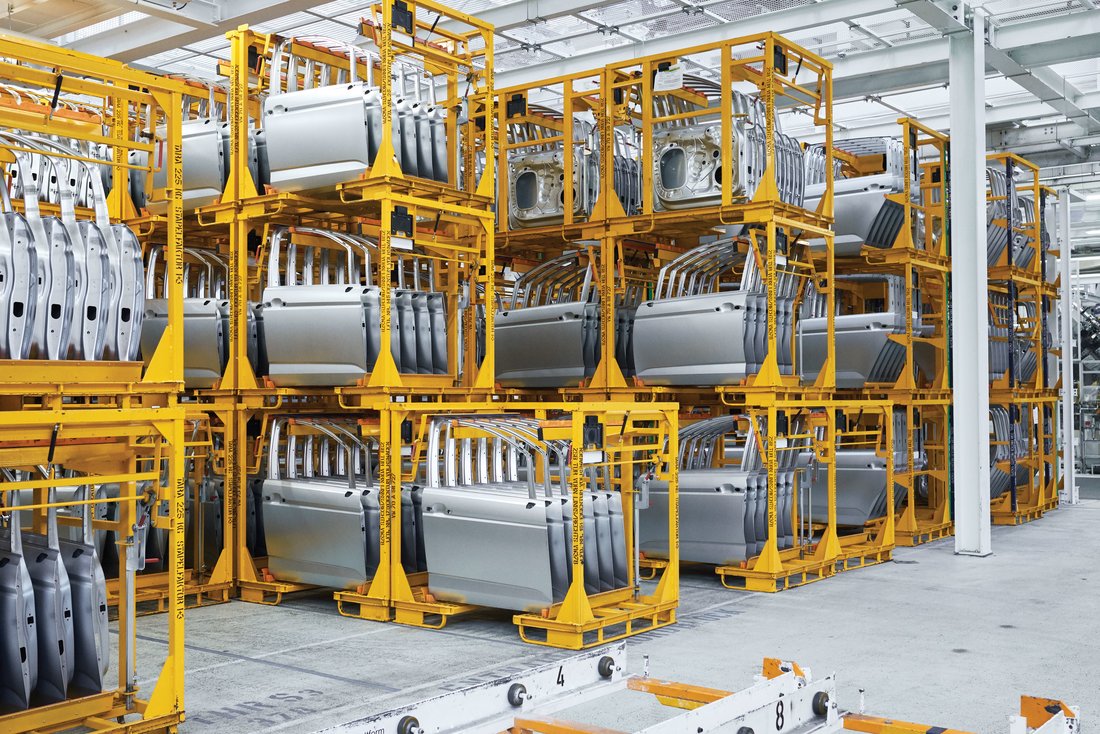
|
排放门丑闻几乎笼罩着我在沃尔夫斯堡的所有对话,而高管们也在反思其中的细节,表达了他们的震惊和羞愧,同时还描述了他们走出危机并改造大众的计划。 希尔楚德·维尔纳说:“这是自二战以来德国最严重的工业丑闻,它将成为公司历史中永远抹不去的一个污点。”希尔楚德于去年加入公司,负责诚信和法律事务,是大众管理委员会唯一的女性。她还指出,“丑闻的严重程度可谓是前所未有。” 财务上付出的代价一样很大。目前大众已经赔付300亿美元,数字肯定会增加,相当于“业绩很好时三年总收入,但业绩并不是每年都很好。”技术总监艾希霍恩表示。“公司做出这样的事我觉得很丢脸。” 虽然沃尔夫斯堡的大众总部各种反思,有个问题一直存在:虽说晚了点,但公司已经迅速转向绿色科技,能不能借此重塑自身维持巨大的影响力,还是会跟传统汽车工业的商业模式一样稳步下滑? |
Dieselgate overshadowed almost every conversation I had in Wolfsburg, as executives pored over its details, described their shock and embarrassment, and outlined their plans to exit the crisis and remake Volkswagen. “This is the worst industrial scandal in Germany since World War II,” says Hiltrud Werner, who joined the company last year to take charge of integrity and legal affairs and is the sole woman on Volkswagen’s board of management. “This will stay with the history of this company forever,” she adds. “It has a magnitude that we have not seen before.” The financial cost has been mammoth as well: The $30 billion paid out so far—a figure that is sure to rise further—equals “the money we make in three good years, and we don’t always have good years,” says technology chief Eichhorn. “I am ashamed that my company did this.” For all the soul-searching in Wolfsburg, however, one question remains: Now that the company is rushing—belatedly—to embrace green technology, can it remake itself quickly enough to retain its enormous clout, or will it steadily decline, along with the old-style business models of traditional automakers? |

|
目前复苏的迹象看起来还不错。大众销售和收入创下新纪录。就在丑闻爆发一年后的2016年,大众取代丰田成为全球汽车销量最高的制造商。但从加州到中国还有很多更年轻也更灵活的竞争对手拼命追赶,还不受死板规矩限制,而且跟大众一样,各家公司都希望开创新时代的汽车行业。 讽刺的是,大众成功最大的希望也来自丑闻,因为丑闻刺激大众直面深层次的缺陷并认清现实,如果持续不变将面临严峻威胁。 2015年7月,迪斯离开宝马加入大众,就在排放门曝光两个月前。大众招徕他主要是希望获得新想法和技术战略,并借鉴他之前在宝马削减成本的经验。加入之后他的职责却变成大力破除旧习惯并打造新的文化。“我非常确定,由于行业里发生的事情,公司必须改变。”迪斯说。“但柴油排放危机加快了变革进程。” 刚开始大众对排放门的反应不太紧迫,也没太在意。2015年9月18日,美国环保署官员没有通知大众就在华盛顿召开新闻发布会,并宣布了近期最大的企业欺诈行为之一。位于4000英里外沃尔夫斯堡的高管们措手不及。他们派出长期担任首席执行官马丁·温特科恩用德语在电视上生硬地发表了一份类似道歉的声明,他将排放丑闻称为“少数人犯下的错误”,却对公司的责任轻描淡写。几天后温特科恩辞职,今年5月,他在底特律因涉嫌误导美国公众遭到起诉。 丑闻爆发时,迪斯正在西班牙度假,当时他已是大众汽车管理委员会成员。他等了一整天才飞回家。“当时我并不知道事情会发展成什么样,也不知道会付出多少代价。”他说。 “唉,别提了。” 令人惊讶的是,排放作弊曝光纯属偶然,当时一群西弗吉尼亚大学的研究生在洛杉矶附近驾驶大众车辆上下高速公路,记录车尾排放数据。他们本意不是检测违规行为,只是个简单的研究项目。但按照大众工程师设计的方案,排放只在比较测试期间达标,符合美国大多数州要求。所以学生们偶然揭发出一桩国际丑闻。 他们把测试结果交给加州和联邦官员时,众人皆惊。大众汽车的业务严重依赖柴油车,数年里向美国人吹嘘环保新型“清洁柴油”。事实上更像是卖狗皮膏药。美国调查人员透露,沃尔夫斯堡的管理人员曾阻止内部提出排放作弊的问题,提出质疑的工程师都被要求保持沉默继续照做。美国当局将数据跟大众对质时,大众表示毫不知情。 然而除了沃尔夫斯堡自我封闭的小世界,汽车行业其他高管心里都很清楚。业内巨头不仅犯下刑事罪行,还对后果漠不关心。 “当时我在想,天呐,这些家伙居然这么天真?”现任大众集团战略高级副总裁的托马斯·塞德兰回忆起丑闻爆发时称。当时赛德兰担任雪佛兰欧洲公司的董事总经理,2015年年底加入大众,协助在排放门之后重塑公司形象。“为什么他们觉得撒谎没什么问题,还相信不会被抓住?”一天下午他坐在沃尔夫斯堡的办公室里说,大众仍然深陷丑闻困境。 “被抓住之后还是撒谎。真搞不懂。” 问题的答案不在于企业贪婪,也没有误解外国法律。根据许多内部人士和外界人士的说法,问题根源在于大众内部异常保守和严格的等级文化,数十年间从大众总部孕育而成。沃尔夫斯堡约有75,000人在大众工作,超过该镇居民人数一半。 几十年来,大众汽车一直受领导人把控,领导讲话不容质疑,其专横风格在德国拥有巨大的政治影响力。德国总理安吉拉·默克尔就不止一次代表大众干预法规,包括可能控制柴油氮氧化物排放的欧盟法规,在美国也一样。 |
So far, the signs of a recovery look good. Volkswagen is generating record sales and revenues; it overtook Toyota as the world’s biggest automaker by sales volume in 2016, the year after the scandal broke. Even so, competitors from California to China—younger, more agile, less hidebound by rigid structures—are nipping at its heels and, just like Volkswagen, are racing to build a new-age auto industry. Ironically, Volkswagen’s best hope for success springs from the scandal itself, which forced the automaker to confront its deep flaws and to conclude that it faces severe threats if it remains unchanged. Diess arrived at Volkswagen from BMW AG in July 2015, two months before -Dieselgate exploded. He was lured to Volkswagen specifically to inject new ideas and technology strategies, and to cut costs, as he had done at BMW. Now he is charged with taking a wrecking ball to old habits and creating a new culture in its place. “I was already quite sure this company had to change because of what was happening in the industry,” says Diess. “But the diesel crisis has accelerated our change process quite considerably.” Volkswagen’s initial response to Dieselgate was not so urgent or inspired. On Sept. 18, 2015, EPA officials called a press conference in Washington, without alerting Volkswagen beforehand, and announced one of the biggest corporate frauds of recent times. Executives in Wolfsburg, 4,000 miles away, were caught off guard. They dispatched longtime CEO Martin Winterkorn to deliver a stilted half–apology on television, in German, in which he blamed “the mistakes of only a few” and downplayed the company’s responsibility. Winterkorn resigned days later, and in May of this year, he was indicted in Detroit for having misled the U.S. over the cheating. Diess, who already sat on Volkswagen’s board of management, was relaxing on vacation in Spain when the scandal broke, and he waited a full day before flying home. “At that time, I did not have any idea of how it was going to end up, or how much it would cost,” he says. “No, no.” Amazingly, the cheating was uncovered by sheer happenstance, when a group of graduate students from West Virginia University rode Volkswagen vehicles around Los Angeles, hopping on and off freeways, and recorded emissions on gear they had rigged up in the back. They had no expectation of finding wrongdoing; it was a simple study project. But Volkswagen’s engineers had devised the scheme to display good emission levels only during controlled tests, of the kind that most states in the U.S. require. And so the students stumbled on an international scandal. When they brought their results to California and U.S. officials, there was a stunned response. Volkswagen, whose business depended heavily on diesel cars, had spent years boasting to Americans about its eco-friendly new “clean diesel.” In fact, it was more like selling snake oil. U.S. investigators revealed that managers in Wolfsburg had sought to stifle internal questions about emissions cheating, and that engineers who raised concerns were told to keep quiet and carry on. When U.S. authorities confronted Volkswagen with the data, it denied all knowledge. To auto executives outside the hermetic world of Wolfsburg, the implications were clear. A global giant of their industry had not only acted criminally but also appeared blithely unconcerned about the consequences. “I thought, Jesus Christ, how naive are these guys?” says Thomas Sedran, now Volkswagen’s senior vice president for group strategy, recalling the moment the scandal broke. Sedran was managing director of Chevrolet Europe at the time and was recruited by Volkswagen in late 2015 to help reshape the company in the wake of Dieselgate. “Why did they think it was okay to cheat and believe they would not get caught?” he says, sitting in his Wolfsburg office late one afternoon, still flummoxed by the scandal. “And even when they were caught, they still lied about it. I don’t get it.” The answer to Sedran’s question lay not in corporate greed nor in misunderstanding foreign laws. According to many insiders and outsiders, the problem was Volkswagen’s unusually insular and rigidly hierarchical culture, which had been bred over the decades within Wolfsburg, where about 75,000 people—more than half the town’s residents—work for the company. Volkswagen had for decades been dominated by leaders whose word was unquestioned and whose imperious style held huge political sway in Germany. Chancellor Angela Merkel has more than once intervened on Volkswagen’s behalf to dilute regulations—including EU rules that might have reined in diesel’s nitrogen oxide emissions, as they do in the U.S. |
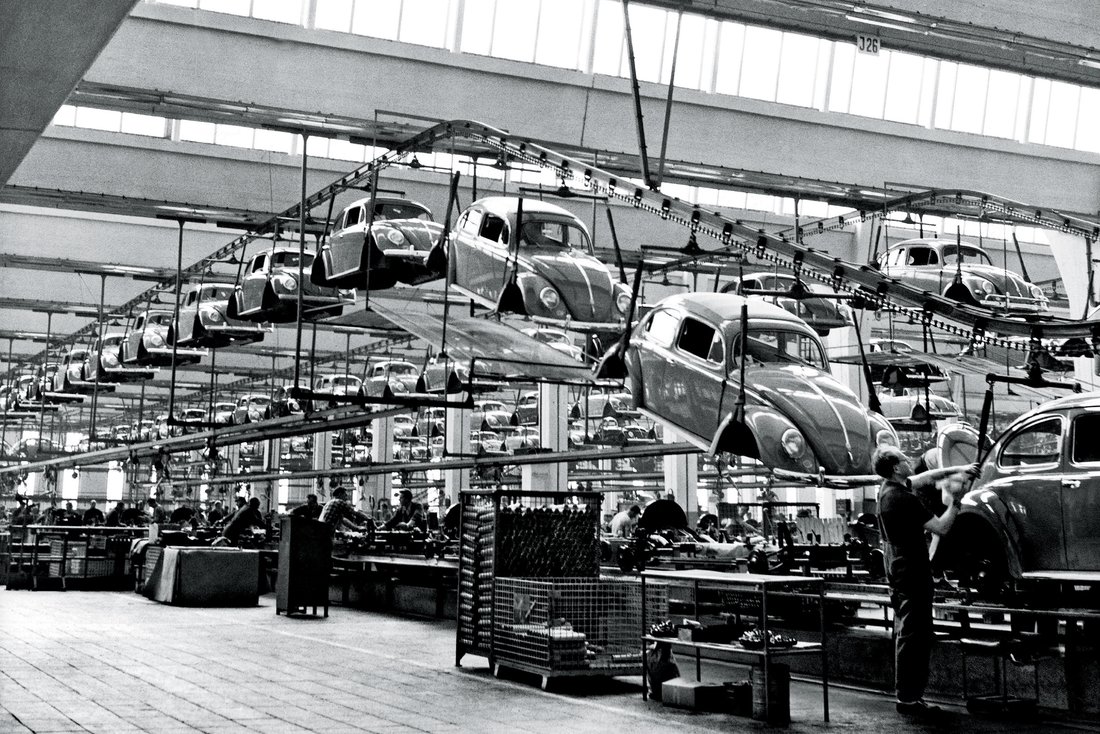
|
沃尔夫斯堡的存在主要因为政治,而大众又能主导政治。当年纳粹开创这个小镇当成理想工厂原因是地处德国中部,劳动力充足。现在工厂则占据了整座小镇,镇上交通堵塞的时间都跟组装线排班保持一致。甲级联队大众足球队(德国叫Fussball)队员在公司建的体育场里比赛。Autostadt是大众于2000年开放的汽车展示和主题公园,旋转展示展品,而且全年都有文化活动,包括音乐会和夏季国际马戏节等。 在采访中,专家和公司内部人士都认为丑闻与大众的僵化文化有关,中层管理人员和低级别工人不愿质疑上级的决策,包括排放测试作弊的决策。 “开会时,每个人都在等待老板说话。”维尔纳接着说,其他德国公司也有这种倾向。她说,大众汽车内部缺乏多样性,尤其是性别方面,也加强了官僚化趋势。我问她作为管理委员会中唯一女性是什么体验时,她比作在国外。“出国时必须学习当地人的语言才能生存。她说。“所以,我得学习男人的语言才能生存。”她偶尔也会主动推进会议,好让其他人认真对待她的意见。“有时我必须强调,我在这行已经干了27年。”她说。 “我跟他们一样,汽车的基因流淌在血液里。” 20世纪60年代以来,负责监督大众董事会的车监事会结构从未改变。下萨克森州政府(沃尔夫斯堡所在地)的当地高级官员持有20%股份,对许多战略决策有否决权。创立公司的皮耶希和保时捷两大家族也有永久代表,还有一半成员来自工会;根据德国法律,公司董事会必须有工人代表。 行业分析师认为,正因为董事会结构长期不变,大众员工人数才会达到64万之多,跟丰田产能差不多,人却多出了约三分之一。2016年,大众劳工代表和当地政界人士与管理层长期谈判后,终于同意允许全球裁员3万人。 “认真分析就会发现,大众内部效率极低。”伦敦Evercore ISI全球汽车研究主管阿恩特·埃林霍斯特说,本世纪初他曾在大众总部当管理培训生。 “公司管理有很大提升空间。”埃林霍斯特在今年5月给投资者的研究报告中写道,“大众公司结构过于老旧,非常影响股东的看法。” 曾研究排放门事件的人们表示,过时的公司结构也是大众汽车出问题的关键原因。“根源在于,一些不称职的人受到不良的公司文化纵容。”美国司法部前副部长拉里·D·汤普森说,2017年4月司法部任命他担任大众汽车独立监察员。作为大众汽车与美国政府和解方案的一部分,汤普森带领约60人的团队在认真监督沃尔夫斯堡内部改革。他说,公司文化“不鼓励职业经理人诚实地讲出知道的问题,也不鼓励怀疑现状。” 持续数十年根深蒂固的习惯改变起来是个漫长的过程。“思维方式要转变。”迪斯说。“很多人只关注公司前五号人物,甚至只关注首席执行官的意见。要让人们相信所有人都要承担风险和责任,具备主人翁精神,其实并不容易。” 不过分析师认为,迪斯可能是改变大众汽车的最佳人选,特别是跟很多思维固化的人相比,他想法还算灵活。“他对大众汽车极其重要。”埃林霍斯特说。“这是个巨大的机会。人们相信他可以强力推动变革。”伦敦J.P.摩根汽车股研究员何塞·阿苏门迪表示赞同,称迪斯是“德国汽车业最佳首席执行官”。 各种迹象表明变化正在发生。有些不太明显,比如同事之间称呼对方时开始用德语里非正式代词du而不是更正式的Sie。最近大众汽车还发布了首个公司行为准则,其中包括人权、性别平等和环境保护等规定。
|
Wolfsburg’s very existence is owed to politics, and VW dominates the landscape. The Nazis created the town as an ideal factory site, since it sat in central Germany with plentiful labor. Today, the factory dominates the town, with traffic jams timed to shift changes on the assembly line. A first-division Volkswagen soccer (or Fussball, in German) team plays in the company-built stadium. The Autostadt—a showcase and theme park of cars, with rotating exhibits, which Volks-wagen opened in 2000—runs year-round cultural programs, including concerts and an international circus festival in the summer. In interviews, experts and company insiders draw a direct connection between the scandal and Volkswagen’s rigid culture, in which mid-level managers and low-level workers were reluctant to question their superiors’ decisions, including the decision to cheat on emissions tests. “In meetings, everyone is holding back and waiting for the boss to say something,” says Werner, adding that the tendency is found in other German companies too. At Volkswagen, she says, the lack of diversity, including in gender, reinforces that tendency. When I ask her what it is like to be the only woman on the management board, she likens it to being in a foreign country. “When you go abroad, you have to learn the language of the locals to survive,” she says. “So I have to learn the language of the men to survive.” That, she says, includes occasionally pushing in meetings for her views to be taken seriously. “I have to make it clear to them sometimes that I have also worked for 27 years in the industry,” she says. “I have fuel in my blood, just like they do.” The structure of Volkswagen’s supervisory board, which oversees the board of managers, has remained unchanged since the 1960s. Top local officials from the Lower Saxony government (where Wolfsburg is situated) hold a 20% share, with veto power over many strategic decisions. There is also permanent representation from the Piëch and Porsche families, who founded the company, and half the members are from workers’ councils; under German law, company boards must include worker representation. Industry analysts believe the unchanged board structure is one explanation for Volkswagen’s giant workforce of 640,000 people—about one-third bigger than Toyota’s for almost equal output. After long negotiations with management, in 2016 Volkswagen’s labor representatives and local politicians finally agreed to allow the company to cut 30,000 jobs worldwide. “When you analyze it, it is extremely inefficient,” says Arndt Ellinghorst, head of global automotive research at Evercore ISI in London, who was a management trainee at Volkswagen headquarters in the early 2000s. “It should be far better run.” In a research report to investors in May, Ellinghorst wrote that “VW’s outdated corporate structure remains a major burden to shareholder sentiment.” That structure is also one key factor in what went wrong at Volks-wagen, say those who have examined the Dieselgate affair. “What occurred was the combination of some bad people and a bad culture,” says Larry D. Thompson, a former deputy U.S. attorney general, whom the Department of Justice appointed in April 2017 as the independent monitor of Volkswagen. As part of the com-pany’s legal settlement with the U.S. government, Thompson’s team of about 60 people now scrutinizes the internal reforms in Wolfsburg. The company culture, he says, “discouraged professional managers from speaking honestly about problems they knew about or suspected were going on.” Overhauling decades of ingrained habits will be a long process. “We need a change in the mindset,” Diess says. “Many people were focused on what was said by the top five people or probably by the CEO himself. To convince them that they have to take risks, responsibility, ownership—that is not easy.” Still, analysts think Diess might have the best shot of anyone at changing Volkswagen, especially considering that compared with company lifers, he is an outsider. “He is unbelievably important for Volkswagen,” Ellinghorst says. “It is a huge opportunity. The trust is he will drive change in a very forceful manner.” José Asumendi, auto equity researcher at J.P. Morgan in London, agrees, calling Diess “the best CEO of the auto industry in Germany.” There are signs everywhere that changes are underway. Some are subtle, like colleagues beginning to address each other with the German informal pronoun du rather than the formal Sie. Recently, Volkswagen issued its first companywide code of conduct, with guidelines that include human rights, gender equality, and environmental protection. |
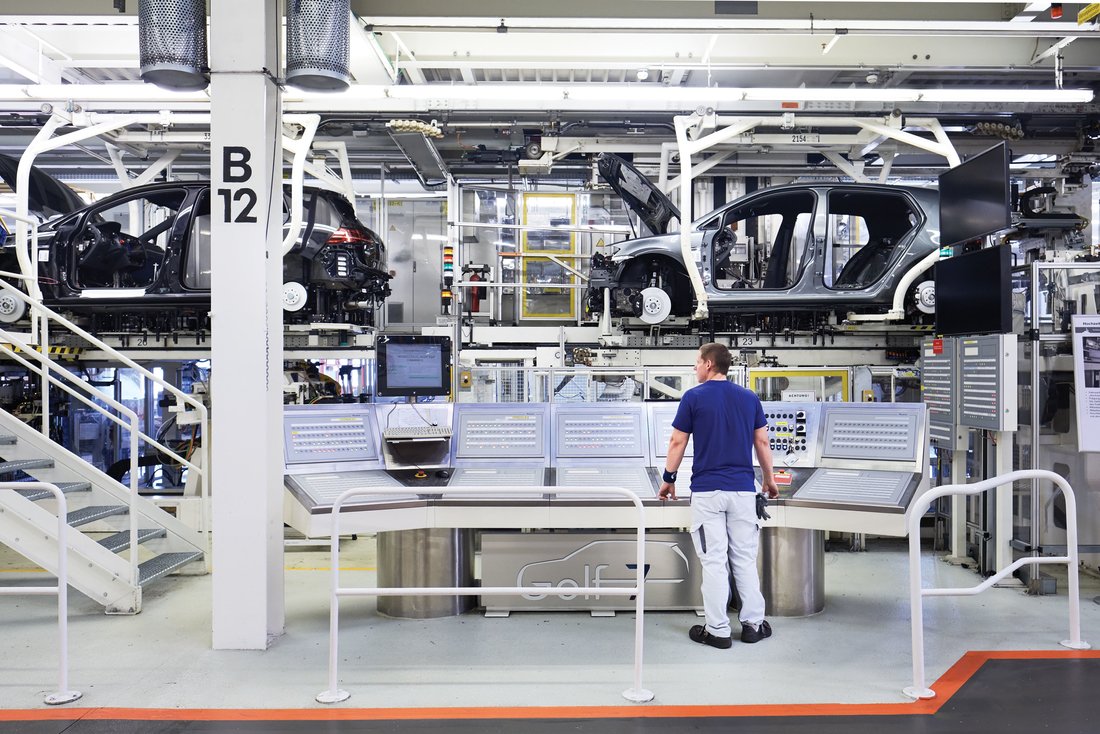
|
诚信主管维尔纳发起了一场宣传新价值观的运动,即包括公开谈论问题。6月下旬一个早晨,我乘上她倡导的“诚信公交车”,一辆涂装鲜艳的大客车,每个月她都邀请员工乘车在沃尔夫斯堡工厂周围开一小时。此举主要为了让员工相对客观地对高管成员表达不满和焦虑,这对大众来说就是个比较新的概念。这天早上,公交车上坐满了技术工程师,都因排放门受到同事“责骂”。“每次去食堂,都让人感觉他们就是害公司赔偿250亿欧元的人。”维尔纳说。“这种情况并不容易处理。”在车上,有名男员工说听到外界对公司严厉指责之后感到很不安。维尔纳告诉他公司正在变化,而且没有“回头路”,不过她也强调“可持续变革需要一个生命周期。” 无论转型最终需要多久,迪斯深信未来十年动荡中大众汽车保持增长至关重要。“死守旧的公司文化很难生存,以前过于依靠总部,依靠核心决策。”他表示。“如果同样的问题要问很多遍,速度肯定很慢。” 在沃尔夫斯堡小镇,大众汽车的等级文化正在转变,尽管速度缓慢。在瘦长健谈而且精力十足的迪斯带领下变化,这位首席执行官的口头禅包括“分享”和“合作”,正悄悄加入讨论公司变化的谈话中。 迪斯主导重大改组计划时,部分工作就是将迷宫式架构分为四大产品线:普通、优质、豪华(大众旗下高端车型有宾利和布加迪),还有卡车和公共汽车拆分为独立公司,最快明年就能上市。12个品牌都在部门内部汇集集中创意,做出各种决策,不用为了老板认可相互竞争。用迪斯的话来说,公司新架构不仅可以改变“思维方式”,而且最终目标是削减数十亿美元开支。 机构精简的推进情况对于大众汽车能否实现激进转型至关重要,也决定了大众能否成为全球电动汽车领域的主要参与者。 转型电动汽车计划非常庞大,令人眼花缭乱,而且花费显然不菲。今年5月迪斯告诉股东,未来四年内投资近400亿美元生产电动汽车。大众汽车的目标是,到2025年出产汽车中四分之一都是电动汽车,每年达数百万辆,在全球电动汽车市场份额占10%到15%。这意味着未来四年大众汽车在全球有16家工厂要转型或扩建,其中有一家在美国,五家在中国。首席技术官艾希霍恩表示,十年内大众汽车需要至少六家新电池工厂,每家规模都与埃隆·马斯克在内华达州550万平方英尺的Gigafactory工厂相当,马斯克的工厂主要为特斯拉生产电池。“我们希望成为电动车技术领域的领导者,跟之前在内燃机领域一样。”艾希霍恩表示。 |
Werner, as the integrity chief, has launched a campaign to spread the word about new values—including the ability to speak openly about problems. One morning in late June, I hopped aboard her “integrity bus,” a bright-painted motor coach she fills once a month with invited employees, for an hour-long drive around the Wolfsburg campus. The idea is for them to air grievances and anxieties on neutral ground, with a member of senior management—a relatively new concept at Volks-wagen. On this morning, the bus is filled with technical engineers, whom Werner says have been “stigmatized” among colleagues for being responsible for Dieselgate. “They cannot go into the canteen without people feeling they were the ones who made us pay 25 billion [euros],” she says. “That is not easy to deal with.” On board, one man says he is troubled by the strong criticisms he hears about the company. Werner tells him the company is changing and is at “a point of no return,” but she also tells him “it will take a life cycle to have sustainable change.” However long the transformation takes, Diess is convinced that it is crucial for Volkswagen to keep growing through the industry’s tumultuous next decade. “It will be very difficult to survive with this kind of company culture, relying very heavily on headquarters, with central decisions,” he says. “You ask many times the same questions. You get slow.” In small-town Wolfsburg, Volkswagen’s hierarchical culture is shifting, albeit slowly. In the hands of Diess—lanky and chatty, with a kinetic energy—the CEO’s buzzwords like “sharing” and “cooperation” now creep into conversations about how life is changing in the company. As part of a major reorganization, Diess has grouped the labyrinthine company into four categories: volume, premium, luxury (Volkswagen owns high-end Bentley and Bugatti), and trucks and buses, which will be spun off as a separate entity, with an IPO perhaps as soon as next year. Each of the 12 brands is now expected to pool ideas within its group, making a broad range of decisions rather than competing among themselves for the boss’s approval. Not only will the new organization change “the mindset,” to use Diess’s term, but also it is aimed at cutting billions in expenses. That leaner operation is critical if Volkswagen has a shot at succeeding in its most radical transformation ever: becoming a major global player in electric cars. The scale of the electric plan is dizzying—and won’t come cheap. In May, Diess told shareholders that the company intends to invest nearly $40 billion into producing electric cars within the next four years. By 2025, Volkswagen aims to have one–quarter of the vehicles it produces be electric—millions of cars a year—and to have a 10% to 15% share of the electric-car market globally. That will require converting or expanding 16 factories around the world within four years, including one in the U.S. and five in China. Eichhorn, the CTO, says Volkswagen will also need at least six new battery factories within a decade, each of them the size of Elon Musk’s 5.5-million-square-foot Gigafactory facility in Nevada, which produces batteries for Tesla. “We want to be the technology leader in this, just as we were the technology leader in the combustion engine,” Eichhorn says. |

|
事实上,大众汽车是在努力弥补失去的时间。遭受排放门重创后,大众汽车于2016年推出电动车战略,此时距马斯克创立特斯拉已过去13年。 “如果没有柴油危机,大众汽车就不会有电动车平台。”塞德兰说。“单从财务方面看的话,转型电动车并不是个好主意。由于我们在财务上很成功,所以意识到这点太迟了。” 思想变化可谓翻天覆地。虽然大众汽车动作很晚,但迪斯认为只要投资足够,大众可以利用数十年的传统汽车制造经验超越竞争对手。“我们有经销商渠道,还有市场。”他说。谈到与特斯拉相比时,他表示“希望为数百万人制造电动汽车,而不仅仅是百万富翁。把某款汽车销量从一万辆增加到一百万辆?我们在每个国家都能做到。” 大众汽车新项目里,有不少曾遭董事会否决的想法,比如明年大众将在德国多个城市推出共享电动车计划,2020年将推广到全球各地。6月下旬我抵达沃尔夫斯堡时,大众的经理们兴奋不已。因为前些日子在科罗拉多落基山举办的Broadmoor Pikes Peak拉力赛上,名叫I.D. R Pikes Peak的大众定制版电动车在不到8分钟的比赛中获胜。“人们对电动汽车一直抱有巨大怀疑,但我们赢了!”大众汽车品牌首席战略官迈克尔·乔斯特激动地说。 由于起步比较晚,现在大众汽车也在关注电动汽车之后的新趋势:自动驾驶汽车。迪斯认为,距自动驾驶汽车面世可能只有几年时间,印度或中国新崛起的城市可能最先出现。 |
In reality, Volkswagen is racing to make up for lost time. It only launched its electric strategy in 2016 in the disastrous aftermath of Dieselgate—13 years after Musk founded Tesla. “Without the diesel crisis, Volkswagen would not have an electric platform,” Sedran says. “Just on the financials, it is not a good idea. We would have realized too late, blinded by our financial success.” The thinking has changed drastically. While Volkswagen is late, Diess believes that with enough investment, VW can leverage its decades of producing fuel-burning cars to overtake its competitors. “We have the dealerships, the markets,” he says. In comparison to Tesla, he says, “we want to make e-cars for millions, not just for millionaires. Ramping up a car from 10,000 to a million? We can do that in every country in the world.” Among Volkswagen’s new projects are ideas the board once rejected, like an electric car–sharing scheme the company is launching next year in German cities before going global in 2020. And when I arrived in Wolfsburg in late June, managers were buzzing with excitement over the Broadmoor Pikes Peak rally that had taken place in the Colorado Rockies days before, where Volkswagen’s custom-made electric car, called I.D. R Pikes Peak, won the race in under eight minutes. “There has been big skepticism about EVs—and we won!” cooed Michael Jost, chief strategy officer for the VW brand. Having been caught behind the curve, the company is now focusing on what comes after electric vehicles: driverless cars. Diess believes autonomous vehicles are probably only a few years away, perhaps beginning in newly built cities in India or China. |

|
看似空想的概念确实已进入设计阶段。Autostadt展厅里有个未来主义的城市模型,车主在办公室里忙工作,另一边移动机器人在停车场四处移动给汽车充电。这是大众汽车与德国机器人制造商KUKA合作研究的创意。 “对我们来说是个全新的世界,”迪斯说。“问题是我们能不能做到迅速应用新技术,变得更像软件公司?” 各种很棒当然也很昂贵的发明目前还不是大众汽车的核心业务,但经历了焦虑的三年之后给公司注入了不少乐观情绪。“我们有很多新想法。”大众汽车研究部执行董事阿克塞尔·海因里希兴奋地告诉我。有天下午,他带我穿过大楼,介绍了大众600名科学家和工程师当中几位给我认识。他们的发明包括用废弃的香蕉叶和蘑菇根制成汽车座椅,不再使用动物原料,此外还有适合仪表板的数字“贴心助手”。研究人员称,该助手可在司机驾驶时完成复杂的双向对话。 在柏林西部的波茨坦,欧洲大众未来中心(北京和硅谷还有另外两家)推出了真实尺寸的未来汽车模型,由泡沫塑料制成,还装配了自动驾驶汽车SEDRIC的改装版。“我们谈论的是未来,而且不只一种未来。”运营该中心的汽车设计师彼得·沃达说,他向我展示了搭建的新虚拟现实平台,几秒内就可以调整设计。“在遥远的未来”,沃达表示,“大多数人都不会真正拥有汽车。” 当“遥远的未来”到来时,迪斯希望大众汽车除了汽车制造商,还是家科技公司。转型工作才刚刚开始,而且随着排放门之后努力重建信誉徐徐展开。“我们失去了很多客户的信任,”迪斯说。“重建需要时间。”与此同时,全新形象的大众正努力加速驶向未来。(财富中文网) 本文另一版本刊载于2018年8月1日《财富》杂志上,标题为《大众汽车大重建背后》。 译者:Ms |
Concepts that seem fanciful are, in fact, already in the design phase. In an exhibition hall in the Autostadt, a scale model of a futuristic city shows mobile robots that zoom around parking lots, recharging cars while their owners are running errands or in the office—an idea that Volkswagen is already working on with German robot manufacturer KUKA. “It is a totally new world for us,” Diess says. “The question is, Can we adopt the new technology fast enough, becoming more of a software company?” These whiz-bang inventions—costly, and for now not Volkswagen’s core business—have injected optimism after three angst-filled years. “We have a lot to show you,” Axel Heinrich, executive director of Volkswagen’s research department, tells me excitedly, as he leads me through the building one afternoon, introducing me to some of Volks-wagen’s 600 scientists and engineers. Among their inventions are car-seat leather made from discarded banana leaves and mushroom roots rather than from animals, and digital “empathic assistants” that fit onto the dashboard and are, say the researchers, capable of conducting complex two-way conversations while you drive. In Potsdam, west of Berlin, the Volkswagen Future Center Europe (there are two others, in Beijing and Silicon Valley) turns out full-size Styrofoam models of future cars, including adapted versions of SEDRIC, the company’s self-driving vehicle. “We talk about futures, plural,” says Peter Wouda, a car designer who runs the center, as he shows me the new virtual reality platform they have built, allowing them to tweak new designs within seconds. In the “far future,” Wouda says, “most people will not own a car.” By the time that “far future” arrives, Diess hopes Volkswagen will be as much a tech company as an automaker. The work of transforming the company has only just begun—and is unfolding as it tries to regain its credibility after Dieselgate. “We have lost a lot of confidence of our customers,” Diess says. “I think it will take time.” In the meantime, the new VW is speeding toward that future as fast as it can. A version of this article appears in the August 1, 2018 issue of Fortune with the headline “Inside VW’s Big Fix-It Job.” |













